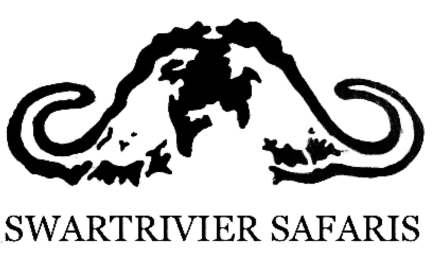Karoo Game Farming - Chapter 2 - Fencing
Jannie helps them choose a site for the sable camp.
When we were last with Peter and Lynn on their family farm, they had decided in principle to go ahead and purchase a small breeding herd of sable from Jannie van Niekerk.
Now Jannie sat with them at the oak diningroom table at Alwynhoek, poring over a large map of the farm. (See the map.) Jannie was saying in his heavily accented English,
“No, man, Pieter, you see”, he said, using the afrikaans form of his name, “It is verry important to think ahead. We must, how you say, kies the sa….” he looked up for help.
“Choose,” said Lynn.
“Dankie, ja, we must choose the sable kamp verry careful, so that you will never had to break down this fences again.” Jannie went on to explain that it was important to consider what other game development there might be on the farm in future. The initial fencing should fit in with what the eventual layout would look like.
“What are you going to do with yourr young bulls, Pieter? In the beginning you can sell them but maybe later you want to make a hunting camp and put them there. Yourr veld otherside the main road would make a lekker place to take hunters to. Dis pragtig daar bo.”
“Ja, it is completely separate from the rest of the farm, and the views from up there are stunning. I like that idea. Don’t worry, Lynn,” said Peter, looking at his wife, “not in the first year or two. Later, when we have made some of the money back.”
“Okay,” continued Jannie, “so you must put the sable breeding kamp on this side of the farm, where your house is, away from where the hunting bulls is. Then you must think, later maybe you want buffalos, if you got a leegte with some grass and doringboom for them to hide in, that would be a good place for buffalos.” He looked up “Remember Pieter, leegtes always has ticks, so you must um…. choose”, this time remembering the word, “choose a rant or a vlak for yourr sables.”
The discussion continued in this vein and most of the different species of game were discussed, their suitability for the area, where they could later be accommodated on the farm, how passive capture systems could be set up, and so on. They discussed where the sable camp could be constructed in such a way as not to interfere with any possible future development.
From the three or four most promising sites, one was chosen, the near point about 500 m west of the homestead but tucked behind a hill and not visible from the road. The same hill would serve as a windbreak during cold south-easter rains.
“Let us go and have a look” said Jannie, so they took a brisk walk to get there. After walking about for a bit, Jannie declared himself happy with the site. “But Pieter, you will had to make some roads. Dis belangrik ne, to be able to put out food, and when you want to dart ”. Jannie was referring to the management technique of darting from a vehicle. The size of the twin camps would be 30 ha each, and they would be equipped with a smaller management camp to link the two. However to save on costs only one camp would now be built. An existing water pipeline would be extended and a trough provided.
“Remember, Pieter, you must go to nature conservation and apply for a permit for captive breeding, ne.” For a game enclosure for less than 50 Large Stock Units in extent, the Dept. of Nature Conservation will not issue a regular Certificate of Adequate Enclosure (CAE) under which game animals can be kept, but rather a captive breeding permit. Alternately, for sable, a CAE for a 1.4 metre fence will do. In a quirk of officialdom, the dept. will issue a CAE for the lower fence even though sable can quite easily clear it. So, though the new game farmer will still construct a higher fence to safely contain his sable, he could pretend to run them in an 800 ha (should the farm be in a 16 h/LSU area) low fence camp, should he conveniently have such an area with an up-to-standard fence round it. Then no captive breeding permit would be necessary.
Jannie then helped them prepare a list of materials for the fencing. The fence was to be 2.4 m high, more to keep the kudu out than to keep in the sable. Also it would include 900 mm of netting to prevent sable calves from finding their way through onto the wrong side.
“When do you want to staarrt building the fence” asked Jannie, “there is a good draadwerker working for me now, en ek kan hom maar vra, he will surely tog help you too?” Lynn marvelled at the language, this mixture of english and afrikaans spoken by the people of the district. She had initially been somewhat shocked by it, but now she found it growing on her.
With profuse thanks from his hosts for his time and trouble, Jannie took his leave.
“He is an amazing man that, your Jannie, “ said Lynn. “Who else would give up so much of their time to help beginners?”
“Yes, he has been good to us. We are buying animals from him, but he has gone far beyond what was necessary to secure a sale. I am glad that we have decided to come and live in the platteland, I like the people here.”
"Me too."
Join Peter and Lynn in the next chapter as they discuss how to raise finance.


